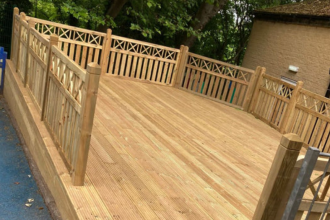Have you ever shivered in your own home on a cold winter night, cranking up the thermostat but still feeling a persistent chill? Or maybe you’ve experienced the opposite in the summer, battling scorching heat despite blasting the AC? Poorly insulated homes can be uncomfortable and expensive. The culprit behind these issues is often inadequate insulation.
But fear not! By understanding home insulation like you see on EnviroBead, you can transform your dwelling into a haven of consistent temperature, reduced energy bills, and improved comfort. This comprehensive guide will cover everything you need to know about home insulation, from its benefits and types to installation and much more.
Why Insulate Your Home?
Think of insulation as an invisible blanket for your house. It acts as a barrier, slowing down the transfer of heat in and out. In the winter, it traps warm air inside, keeping you toasty without constantly running the heater. Conversely, during the summer, it prevents the relentless outside heat from radiating through, keeping your home cool and reducing reliance on air conditioning.
The Advantages of a Well-Insulated Home
The advantages of proper insulation extend far beyond just temperature control. Here are some key benefits to consider:
1. Reduced Energy Costs
This is perhaps the most significant advantage. Proper insulation significantly reduces the amount of energy needed to heat or cool your home. Studies by the Department of Energy suggest that insulation can save homeowners up to 15% on heating and cooling costs. These savings can add up quickly, especially in regions with extreme temperatures.
2. Enhanced Comfort
A well-insulated home maintains a consistent temperature throughout, eliminating cold drafts in the winter and stifling hot air pockets in the summer. This translates to a more enjoyable living environment for you and your family.
3. Improved Indoor Air Quality
Proper insulation can help to minimize air leaks, which can infiltrate dust, pollen, and other allergens into your home. This is especially beneficial for those with allergies or respiratory problems.
4. Increased Soundproofing
Insulation materials often have soundproofing properties as well. This can be particularly helpful in reducing noise pollution from outside traffic or noisy neighbours.
5. Increased Home Value
Homes with good insulation are often viewed as more energy-efficient and desirable by potential buyers. This can translate to a higher resale value when it comes time to sell your home.
6. Reduced Environmental Impact
Lower energy consumption from heating and cooling translates to a smaller carbon footprint and a more sustainable lifestyle.
Types of Home Insulation
Now that you understand the importance of insulation, let’s explore the different types available:
1. Fibreglass
The most common and cost-effective type of insulation. It comes in rolls made from tiny glass fibres that trap air. Fibreglass is suitable for attics, walls, and basements, but requires proper installation to avoid air gaps that can compromise its effectiveness.
2. Mineral Wool
Mineral wool is similar to fibreglass in form and function, but made from melted rock or slag. It has the same insulating properties as fibreglass, but may be slightly more fire-resistant.
3. Cellulose
Made from recycled paper products, cellulose is a good eco-friendly option. It’s available in loose-fill form, blown in by professionals, or as pre-cut rolls. Cellulose is particularly effective at filling small cracks and crevices.
4. Spray Foam
An effective and long-lasting option, spray foam comes in two varieties: closed-cell and open-cell. Closed-cell foam expands to fill cavities completely, providing excellent insulation and air sealing according to ETS Air Quality. Open-cell foam is less expensive but offers slightly lower insulation value. Spray foam requires professional installation due to its expanding nature.
5. Rigid Board Insulation
Made from polystyrene, these rigid boards are commonly used for foundations, crawl spaces, and exterior walls. They offer good insulating properties and can also act as a moisture barrier.
When choosing which type of home insulation to go for, consider factors like the area you’re insulating, climate, budget, and desired R-value. R-value is a measure of a material’s thermal resistance; the higher the R-value, the greater the insulating power. Local building codes often specify minimum R-values for different areas of your home.
Where to Insulate Your Home
Here are the key areas where proper insulation plays a crucial role:
– Attic: The attic is a major source of heat loss or gain, depending on the season. Insulating the attic floor, which is the ceiling of your topmost floor, is a highly effective way to improve home comfort and energy efficiency.
– Walls: Exterior walls are another significant area for heat transfer. Opting for cavity wall insulation, where insulation is installed within the wall cavity between studs, is a great option. For existing homes, consider dense-pack cellulose blown into wall cavities through small holes drilled in the exterior siding.
– Floors: Insulating your basement or crawlspace floor can significantly reduce heat loss, especially in colder climates. Rigid board insulation can be installed beneath the floor or along the foundation walls.
– Foundation: Insulating your foundation walls, particularly in basements and crawl spaces, helps prevent heat transfer from the cold ground. Rigid board insulation is commonly used for this purpose.
Remember, good home insulation is an investment that pays off in comfort, energy savings, and a more sustainable home.














